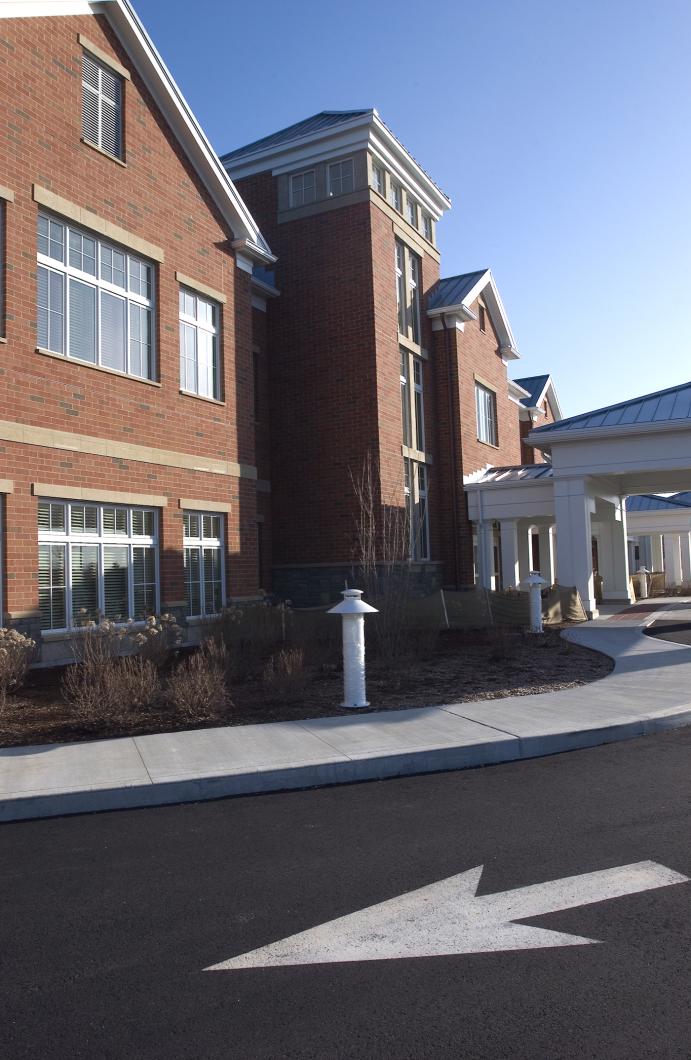Among the little group which toured Martha’s Vineyard’s new hospital on Tuesday, Gladys Welch, recently retried after 59 years as a nurse in the old hospital, and the older hospital before it, was bound to have had the sharpest sense of how much things have changed.
And sure enough, at tour’s end, having seen all the technology and mod cons of the new building, she fell to a bit of reminiscing about the bad old days, when her mother was a nurse and would sometimes have to help orderlies carry patients upstairs for surgery, and then carry them back afterwards.
The new facility, in contrast, due to open April 11, was a technological marvel, she said.
Mrs. Welch was not even scheduled to be on the tour; she was there for something else entirely, the presentation of a citation from the state legislature by the Island’s state representative, Tim Madden, commending her for her 59 years of “selfless dedication to the care and rehabilitation of generations of Islanders.”
She was “impressed, honored and surprised” by the award, even if the citation did omit the letters “R.N.” after her name.
Mrs. Welch also showed herself to be a woman not amenable to overstatement, evidenced when she laughingly corrected Mr. Madden’s assertion that she had been involved in delivering “almost all the kids on the Island.”
She said she had only spent five or six years in maternity.
Likewise, she was circumspect when Mr. Madden pressed her to nominate her favorite doctor.
“Almost all of them,” she said.
“Good answer. Good politician,” Mr. Madden said.
And so the tour began, with Mrs. Welch tagging along, uninvited but welcome, with Mr. Madden, hospital chief executive officer Tim Walsh and project manager Cornelius Bulman and their respective staffs.
And her presence added something. Just seeing how impressed she was, this 59 year veteran of the Vineyard hospital, made the whole thing seem more impressive.
For the new building just bristles with innovations which were undreamed of when Gladys Welch began her medical career, from the solar panels and roof garden on top, which will serve to reduce its energy use, to the 52-inch television monitors, cameras and audio equipment in two operating rooms, which will allow doctors in Boston to assist doctors here as they work.
Things were impressive even when not fully comprehensible; the first major piece of technology Mr. Walsh proudly displayed was the brand new CAT scan machine. Big, gleaming, impressive looking, and, apparently with impressive specifications.
This, he said was a 64-slice machine, compared with the hospital’s old 16 slice one.
And, Mr. Walsh said, noting recent controversy about the amount of radiation patients are exposed to through CAT scans, the hospital had also bought a “package” to lower exposure.
There was other new X ray and other equipment too show off, too. What’s more, to some extent, it will be used remotely.
“Monday through Friday we have a Mass General [Massachusetts General being the Vineyard’s parent hospital] radiologist on site to do the readings, but during off hours or on weekends, we send it over the wires to Mass General and it gets read up there, and comes back within minutes.”
Indeed, he said, the whole place was wired so a lot of doctoring could be done remotely, without the patient having to go anywhere.
Although most things will be ready by April 11, the hospital’s new MRI machine would not be ready until July. Still, it will be a big improvement of the hospital’s old one, which was a ‘mobile’ unit, which came back and forth on the ferry.
“It was a big piece of equipment to be bringing back and forth,” Mr. Walsh said. “It didn’t really work very well.”
The main impression one gets, walking around the new place, is how open and uncluttered it seems, particularly compared with the existing rabbit warren. The expansive new laboratory is a case in point.
“Our existing lab is in a box,” Mr. Walsh said.
The biggest change, he said, was in the emergency area.
“We have 16 rooms, double the size of the existing emergency room.”
Most of those rooms are multi-purpose, but there are two specialty rooms for casting and obstetrics/gynecology. And there is a decontamination room, so admissions with contaminants on them can be washed down before admission to the main hospital, thus avoiding the possibility of contaminating the ER.
Also there’s a clinical isolation room.
“If we have patients who are difficult to control or maybe suicidal, here all the fixtures are locked up,” Mr. Walsh said.
All this space should make things easier for staff, but also more convenient for patients. Triage should be easier.
In the old hospital, one has to register at a desk open to the waiting room, effectively giving up ones details in public. Now there are five private registration rooms.
Upstairs though, is where patients are most likely to be impressed by the difference. It’s still a 25-bed hospital, but the appearance is more like a 25-room hotel.
All the medical equipment is disguised by cupboards.
The maternity suites, or, more properly called labor, delivery and recovery rooms have access to a birthing tub. Among the cupboard-hidden equipment is a bassinet.
There is also a secure nursery, accessed by security card only, but with a large viewing window for friends and family.
And the one pediatric bed comes with a playroom, bed for parents, and separate bathroom.
One could go on and on about the amenities, and Mr. Walsh did; even the adhesive for the floor coverings was chosen because of its environmentally-benign formulation, a decision which caused some delays because it proved slow to dry.
Suffice to say it impressed the Gazette, and representative Madden, and Mrs. Welch.
One piece on new equipment seemed to pique her curiosity more than any other though.
That was the new, digital mammography unit.
“Does it hurt any less than the old one?” she asked.




Comments (1)
Comments
Comment policy »